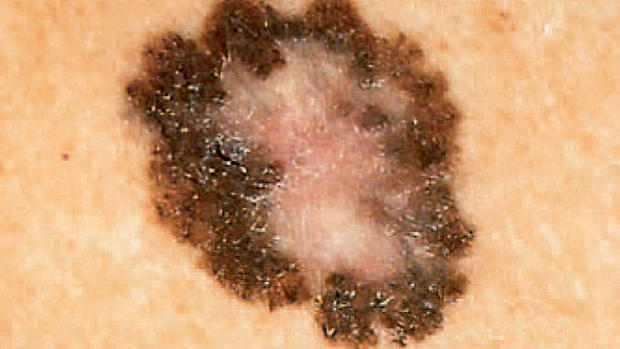New study explains why redheads have increased melanoma risk
A gene receptor called "melanocortin-1" (MC1R) influences skin tone and hair color. One mutation in MC1R leads to red hair and light skin. This mutation also increases melanoma risk, according to a team of scientists at Beth Israel Deaconess Medical Center and Boston University School of Medicine.
Accounting for about 75 percent of skin cancer deaths, melanoma is the least common yet most lethal form of skin cancer.
Nearly 77,000 people are expected to be diagnosed with melanoma each year, according to the National Cancer Institute, and nearly 9,500 are expected to die from the disease.
Published in the journal Molecular Cell on Aug. 22, the new study explains the molecular mechanisms underlying the well-known cancer risk among redheads. The report offers new insights into treatment and prevention.
"In this current study, we have demonstrated that the mutation MC1R-RHC promotes the PI3K/Akt signaling pathway when a red-haired individual is exposed to UV radiation," co-senior author Wenyi Wei, PhD, an investigator in the Department of Pathology at BIDMC and Associate Professor of Pathology at Harvard Medical School, explained in a statement.
The PI3K/Akt signaling pathway is a well-known cancer-causing pathway that's previously been implicated in cancers of the breasts, ovaries and lungs.
- Melanoma on rise in young women: Why?
- Skin cancer risk reduced by taking aspirin, ibuprofen, study shows
- Scientists: Genes, not sun, behind redheads' increased melanoma risk
The team experimented with cell cultures and mouse models in reaching this conclusion. They found that under normal circumstances, MC1R binds to the tumor-suppressing gene called PTEN, which protects against cancer. But when there are mutations, such as the MC1R-RHC mutation found in red-headed individuals, the lack of PTEN results in "elevated signaling in the cancer-causing P13K-Akt pathway."
"As a result, upon UVB exposure, we saw an increased destruction of PTEN in the mutated pigment cells," said Wei. Their findings are in line with recent research conducted at Massachusetts General Hospital, which found a higher incidence of invasive melanomas among mice that carry mutated MC1R genes.
"Together, our findings provide a possible molecular mechanism as to why red-haired individuals harboring MC1R mutations are much more susceptible to UV-induced skin damage than individuals with darker skin, resulting in a 10-to100-fold higher frequency of melanoma," says Wei.
It is unclear why only MC1R mutations linked to red hair - and not all MC1R mutations - are unable to bind to PTEN following UV exposure.
"We think that MC1R variants, in combination with mutations in the BRAF gene, could be used as markers of an increased risk of developing melanoma," said Wei.

